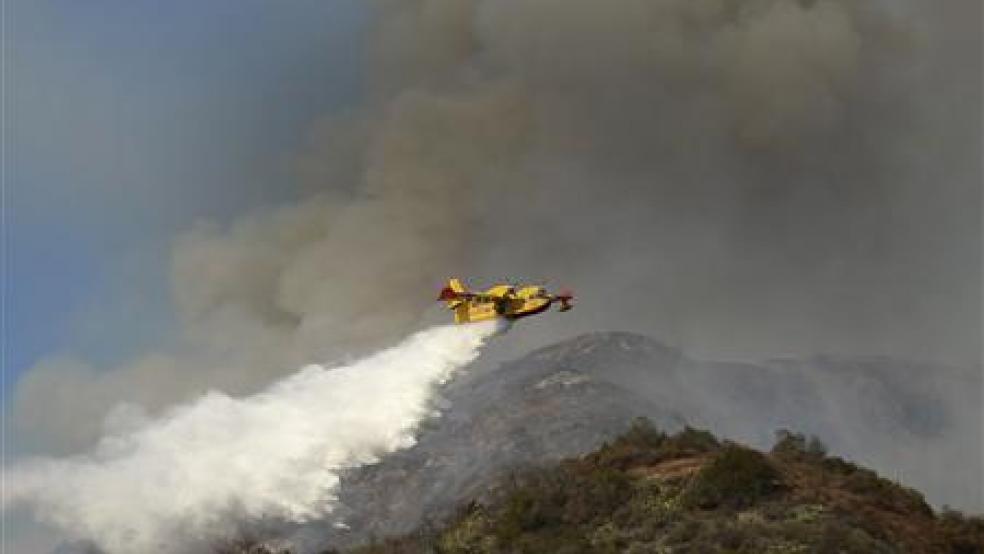Correction: This article originally included references to the environmental effects of firefighting foams containing perfluorochemicals. Those toxic chemicals are not in the class of foams used in forest fires.
Boeing, the world’s second-largest defense contractor after Lockheed Martin, is primarily known for its design and manufacturing of jet aircraft, rockets and satellites. Now the defense giant has signaled interest in developing a new military technology — one that would greatly improve on and speed up techniques for extinguishing wildfires, like the ones currently rampaging through parts of California, Montana, Oregon and Washington State.
Related: California Wildfire Forces Closure of Scenic Highway 1
Traditionally, Forest Service rangers and firefighters have dropped hundreds of thousands of gallons of chemical fire suppressants and water out of airplanes and helicopters to combat wildfires. Putting out a fire in a relatively confined area of 883 acres could take a day or more under the best of circumstances, according to the National Wildlife Coordinating Group.
But as Defense One reported on Wednesday, Boeing has suggested that firefighters could get the job done faster and more efficiently “by launching salvos of special 155 mm shells from a dozen or more miles away.” Rather than dumping fire suppressant material from planes and helicopters, Boeing’s engineers would pack it into massive shells that would be fired from a field howitzer.
As Defense One explained, the artillery piece might be a BAE Systems M777 or a model manufactured by the Swedish arms merchant Bofors. And the shell would release its load of fire suppressant by virtue of a complex array of gizmos, including a timer, an altimeter, a global positioning device, temperature and pressure sensors and a distance measuring device.
Boeing filed a patent application for the new shells in 2014 and made its plans public at the end of July. The defense contractor estimates that each shell could deliver as much as six gallons of fire suppressant on a 100-square-foot area, according to Defense One. Boeing engineers assert that steady firing with three-gallon shells could deliver 214,000 gallons of fire suppressant in about six hours. That would be twice as fast as what could be done with a helicopter.
Related: Wildfire Destroys Dozens of Homes in Central California
The patent application states that some guns could deliver the fire-retarding material within 15 feet of a target at a 15-mile range, which would be some fancy shooting. But the range and accuracy could vary, depending on the type of shell and artillery gun being used.
As Defense One points out, the proposed new artillery shells may not be the perfect substitute for airplanes and helicopters, but nonetheless “could be a valuable contribution, one that’s desperately needed” as hotter and more ferocious wildfires sweep the West.
Hot, dry and windy conditions “have created a perfect storm for the spread of large wildfires” in several western states, including in California, where they have already destroyed 135 square miles of forest and sent tens of thousands of people fleeing their homes, according to the Associated Press. A total of 26 active fires have burned more than 415,000 acres in eight western states.
Related: Boeing Lifts 20-Year Forecast for New Aircraft Demand
Boeing's patent application notes that the external surface of the shell would be made of an environmentally safe metal — one that “decomposes in nature in less than ten years or is inert and is not harmful to the environment without decomposition.” The filing also claims that the fragments of the exploded shell would be environmentally friendly.





